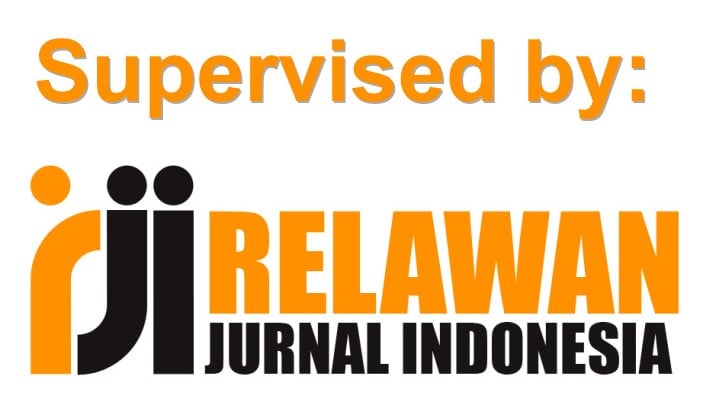Ridha Terhadap Citra Tubuh Pada Remaja
DOI:
https://doi.org/10.18592/jsi.v6i2.2561Keywords:
Citra tubuh, Remaja, RidhaAbstract
The aim of the study is the prove Ridha relationship to body image in students High school. The incompatibility of body conditions with an ideal body image encourages adolescence to change body shape so that confidence increases. This behavior is the implementation of negative body image so that adolescence need to increase self-acceptance or Ridha. Correlational research type with a quantitative approach. The sample population of student class XI and using purposive sampling with a total of 124 samples. Research data collected using the Ridha scale and body image consisting of 26 and 22 valid items with a reliability coefficient of 0,859 and 0,834. The results showed that there is a positive relationship between Ridha with the body image of adolescents which means the higher Ridha then the more positive body image with correlation coefficient rxy=0,324; p=0,000 (p<0,01). R-Square obtained by 0,105 means that being Ridha to contribute effectively is 10,5% to body image.References
al-Jauziyah, I. Q. (1998). Madarijus Salikin (Pendakian Menuju Allah): Penjabaran Kongkret “Iyyaka Na’budu wa Iyyaka Nasta’in". terj. Kathur Suhardi. Jakarta: Pustaka al-Kautsar.
al-Maqdisy, I. Q. (2012). Minhajul Qashidin: Menggapai kebahagian hidup dunia dan akhirat. terj. Irfanuddin Rafi’uddin. Jakarta: Pustaka as-Sunah.
al-Mundziri, I. (2003). Ringkasan hadis shahih muslim. terj. Achmad Zaidun. Jakarta: Pustaka Amina.
Dwinanda, R. F. (2017). Hubungan gratitude dengan citra tubuh pada remaja. Jurnal Ilmiah Psikologi, 9(1).
Hasni, N. I., Karini, S. M., & Andayani, T. R. (2013). Hubungan antara Citra Tubuh Saat Hamil dan Kestabilan Emosi dengan Postpartum Blues di Puskesmas Grogol Sukoharjo. Jurnal Ilmiah Psikologi Candrajiwa, 2(1).
Hurlock, E. B. (1980). Psikologi Perkembangan: Suatu Pendekatan Sepanjang Rentang Kehidupan (5 ed.). Jakarta: Erlangga.
Husni, H. K., & Indrijati, H. (2014). Pengaruh Komparasi Sosial pada Model pada Iklan Kecantikan di Televisi Terhadap Body Image Remaja Putri yang Obesitas. Jurnal Psikologi Pendidikan dan Perkembangan, 3(3), 207–209.
Kemdikbud. (2017). Kamus Besar Bahasa Indonesia Online, ed. Ebta Setiawan. Diakses 3 Desember 2017, dari https://kbbi.web.id/ridha.
Mujib, A. (2017). Teori Kepribadian Perspektif Psikologi Islam (2 ed.). Jakarta: Rajawali Press.
Munawwir, A. W. (1997). Al Munawwir: Kamus Arab – Indonesia. Surabaya: Pustaka Progresif.
Murasmutia, A., Hardjajani, T., & Nugroho, A. A. (2015). Hubungan Antara Citra Tubuh dan Kepercayaan Diri dengan Perilaku Konsumtif terhadap Pakaian pada Mahasiswi Fakultas Hukum Universitas Sebelas Maret Surakarta. Jurnal Ilmiah Psikologi Candrajiwa, 4(3 Des).
Nugraha, F. A. (2014). Hubungan antara body image, self-esteem dan prestasi akademik pada mahasiswa Fakultas Indonesia Universitas Indonesia (Skripsi). Universitas Indonesia, Depok.
Ridha, M. (2013). Hubungan antara body image dengan penerimaan diri pada mahasiswa Aceh di Yogyakarta. Empathy Jurnal Fakultas Psikologi, 1(1).
Sarwer, D. B., Thompson, J. K., & Cash, T. F. (2005). Body image and obesity in adulthood. Psychiatric Clinics, 28(1), 69–87.
Tauran, P. (2014). Hubungan antara body image dengan kapasitas intimacy terhadap lawan jenis pada mahasiswa fakultas Psikologi universitas Padjadjaran (Skripsi). Universitas Padjadjaran, Bandung.
Wiranatha, F. D., & Supriyadi. (2015). Hubungan Antara Citra Tubuh Dengan Kepercayaan Diri Pada Remaja Pelajar Puteri Di Kota Denpasar. Jurnal Psikologi Udaya, 2.
Yuliadi, I., & Karyanta, N. A. (2014). Hubungan antara Body Image dan Imaginary Audience dengan Kepercayaan Diri pada Siswi Kelas X SMA Negeri 2 Nganjuk. Jurnal Ilmiah Psikologi Candrajiwa, 3(3).
Downloads
Published
How to Cite
Issue
Section
License
Authors who publish with this journal agree to the following terms:
- Authors retain copyright and grant the journal right of first publication with the work simultaneously licensed under a Creative Commons Attribution License that allows others to share the work with an acknowledgment of the work's authorship and initial publication in this journal.
- Authors can enter into separate, additional contractual arrangements for the non-exclusive distribution of the journal's published version of the work (e.g., post it to an institutional repository or edit it in a book), with an acknowledgment of its initial publication in this journal.
- Authors are permitted and encouraged to post their work online (e.g., in institutional repositories or on their website) before and during the submission process, as it can lead to productive exchanges, as well as earlier and greater citation of published work (See The Effect of Open Access).





















